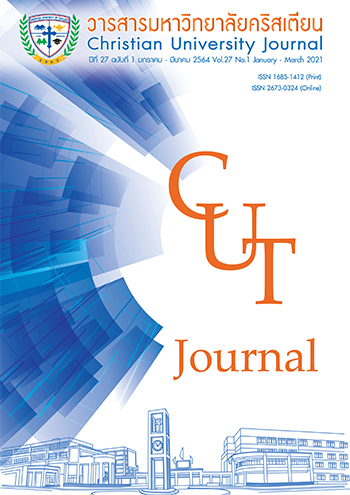Effects of Depression on Walking Speed and Balance in Older Adults
Keywords:
Depression, Walking speed, Balance, Older adultsAbstract
This research aim to study the effects of depression on walking speed and balance in older adults and to study correlation between depressions with walking speed and balance. 72 participants aged between 60-80 years were divided into two group; 36 older adults with depression and 36 older adults without depression. All participants were received 10 meter walk test, which determines walking speed and 8 feet up and go test, which determines balance. The result showed that older adults with depression had walking speed (10 MWT) and balance (8 feet up and go test) as 1.00±0.23 (m/s) and 9.96±4.22 (sec) respectively. And older adults without depression had walking speed and balance as 1.30±0.20 (m/s) and 6.71±1.16 (sec) respectively. Which walking speed and balance showed significantly lower walking speed and balance than older adults without depression (p<0.05). In additions, the research had studied correlation between depressions with walking speed and balance, showed that there was a moderate correlation (r=0.589 and r=0.527 between walking speed and balance with depression (p<0.05).This study showed that depression was factor that effects to walking and balance in older adults, which very important to perform daily activity in older adults. Especially, the activity that involve functional movement. Therefore, the providing care for the elderly with depression, we should be focus the problem of both physical and mental health.
References
กมลพร วงศ์พนิตกุล. (2555).ปัจจัยที่มีความสัมพันธ์กับความกลัวการหกล้มของผู้สูงอายุที่อาศัยอยู่ในชุมชนจังหวัดกาญจนบุรี. (วิทยานิพนธ์ปริญญามหาบัณฑิต). มหาวิทยาลัยบูรพา, ชลบุรี.
จำลอง ดิษยวณิช และพริ้มเพรา ดิษยวณิช. (2547). ความเครียดและสรีรวิทยาของความเครียด. วารสารสมาคมจิตแพทย์แห่งประเทศไทย, 47(3), S3-27.
ดาราวรรณ ต๊ะปินตา. (2556). ภาวะซึมเศร้า: การบำบัดและการให้การปรึกษาโดยการปรับความคิดและพฤติกรรม. (พิมพ์ครั้งที่ 2). เชียงใหม่: วนิดาการพิมพ์.
สำนักงานสถิติแห่งชาติ. (2562). สุขภาพจิตผู้สูงอายุไทย. สืบค้นจาก http://www.nso.go.th/sites/2014.
อำไพวรรณ พุมศรีสวัสดิ. (2543).การพยาบาลจิตเวชและสุขภาพจิต. (พิมพ์ครั้งที่ 3). กรุงเทพฯ: ธรรมสาร.
Aldwin, C.M., Igarashi, H., Gilmer, D.F., & Levenson, M.R. (2018).Health, Illness, and Optimal Aging: Biological and Psychosocial Perspectives. (3rded.). New York: Springer Publishing Company.
Aziz, R., & Steffens D.C. (2013). What are the causes of late-life depression? The Psychiatric clinics of North America, 18(87), 249-263.
Bailey, K.p., Sauer C.D., & Herrell, C. (2002). Mood disorder. St.Louis: Mosby.
Beck, A. T. (1967).Depression. Clinical, experimental and theoretical aspects. New York: Harper and Row.
Chewasopit, W. (2019). AGING SOCIETY: THE CHANGED MARKETING FACTOR. Journal of MCU Nakhondhat, 6(1), 38-53.
Curcio, C.L., Gomez, F., & Reyes-Ortiz C.A., (2009). Activity restriction relate to fear of falling among older people in the columbian andes mountains: Are functional or psychological risk factor more important?. Journal of Ageing and Health, 21(3), 460-479.
Deshpande, N., Metter, E.J., Bandinelli, S., & Lauretani F. (2008). Psychological, physical and sensory correlate of fear of falling and consequent activity restrictionin the elderly: The In CHIANTI Study. American Journal of Physical Medicine & Rehabilitation, 99(6),453-458.
Friedrich, M. J. (2017). Depression is the leading cause of disability around the word. Journal of the American Medical Association, 317(15), 15-17.
Gomes, Cd.S., Maciel, A.C.C., Freire, Ad. N., & Moreira, Md.A. (2014). Depressive symptoms and functional decline in an elderly sample of urban center in northeastern Brazil. Archives of Gerontology and Geriatrics, 58(2), 214-218.
Mammen, G., & Faulkner, G. (2013). Physical Activity and the Prevention of Depression A Systematic Review of Prospective Studies. American Journal of Preventive Medicine, 45(5), 649-657.
Miguel, L. G., Luia, A., Azpicueta, R. & Figueiras, V. (2010). Adaptively biasing the weights of adaptive filters. IEEE Transactions on Signal Processing, 58(7), 3890-3895.
Prasomsri, J., Jalayondeja, C., Bovonsunthonchai, S., & Khemthong, S. (2014). Walking and Stair Climbing Abilities in Individuals After Chronic Stroke wxith and without Mental Health Problem. Journal of the Medical Association of Thailand, 97(7), S10-5.
Sanderman, R., & Oremel, J. (2005). Depression in older people after fall- related injurie: a prospective study. Age and Ageing, 32(1), 88-94.
Sapolsky, R.M. (2001). Depression, antidepressants and the shrinking hippocampus. Proceedings of the National Academy of Sciences of the United States of America, 98(22), 12320 -12322. United States of America.
Sooksompong, S., Kwansanit, P., SupanyaS., & Chutha, W. (2016). The Thai National Mental Health Survey 2013: Prevalence of Mental Disorders in Megacities: Bangkok. The Journal of The Psychiatric Association of Thailand, 61(1), 75-88.
United Nations Population Fund. (2012). Ageing in the twenty-first century: A celebration and a challenge. New York: Author.
Wontasong, N. (2008). Factors Related to Fall in the Fall-Risked Elderly Living in a Community. (Master’s Thesis). Khon Kaen University, Khon Kean.
World Health Organization. (2017). Depression and other common mental disorders: Global health estimates. Geneva: World Health Organization
World Health Organization (2018). Ageing and health. Retrieved from http://www.who.int/news-room/fact-sheets/detail/ageing-and-health.
Wongpanarak, N., & Chaleoykitti, S. (2014). Depression: A Significant Mental Health Problem of Elderly. Journal of The Royal Thai Army Nurses, 15(3), 24-31.
Downloads
Published
Issue
Section
License
Copyright (c) 2021 Christian University of Thailand

This work is licensed under a Creative Commons Attribution-NonCommercial-NoDerivatives 4.0 International License.



